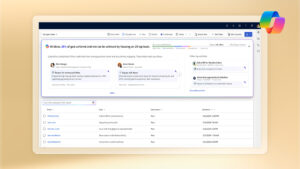
Transition from a product to service model with connected field service
Many manufacturing organizations are transitioning from a traditional product business model to an “as-a-service” business model—including flexible consumption models (FCMs) and “Anything-as-a-service (XaaS)—that lets them pay for what they use. “As-a-service” models provide compelling benefits, such as:
- Predictable and renewable revenue streams
- Greater value to the customer, as they only pay for what they consume
- Deeper insights into consumption patterns to help inform add-on sales
- Lower operational costs by serving customers through a common platform
There are benefits and risks to an “as-a-service” model in manufacturing. For manufacturers, the service has value in that it provides a consistent revenue stream. Conversely, the risk lies in the service not being available for the customer to consume. Any downtime interrupts revenue for the manufacturer as consumption is halted and frustrates the customer with costly interruptions of service.
For the customer, the benefit is that there is a set recurring cost and no capital outlay. Plus, the customer doesn’t have to keep up with the latest technology as it’s not their device. Upgrades and maintenance are typically factored into the service fee. The risk lies in the reliance on the service provider to provide a steady, reliable service and the possibility of the customer increasing usage of the service.
In manufacturing, the move to a service model is made possible by IoT and analytics, which enable the equipment to be part of a broader ecosystem. This process is known as connected field service and can detect and diagnose issues before the customer is even aware. Data generated from the device and analyzed by the manufacturer can drive predictive and preventative maintenance. The data gives the manufacturer a better understanding of how the device is being used and helps to form part of a digital supply chain to get the right equipment to the right place at the right time so there are no interruptions of service.
“As a Service,” or servitization, shifts the focus from the product to the end solution. It creates a frictionless customer experience. It takes the complexities of owning a device, including capital outlay, installation, maintenance, and other considerations out of the hands of the customer to the service provider for one consistent and recurring charge.
This transformation from product to service model is changing the manufacturing landscape. In an IFS research report of 750 decision-makers in 16 countries, 70 percent reported offering some level of servitization.
Companies that experience a downfall in demand can reinvent themselves as a service. For instance, a car manufacturer experiencing an economic downturn with an oversupply of vehicles can create a car rental service. Then, when the economy returns to its former good health, the car rental service becomes just another revenue stream.
Consider Siemens Gamesa, a renewable energy manufacturer of wind turbines. Siemens Gamesa is leveraging field service to extend the field capacity of its wind turbines. The company produces the wind turbines and performs on-going maintenance as a service offering. Siemens Gamesa performs predictive maintenance through IoT and analytics, by way of connected field service, collecting volumes of data from the wind turbines and leveraging artificial intelligence to pinpoint potential repairs.
Using Dynamics 365 for Field Service, Siemens Gamesa continuously monitors the turbines and leverages the power of IoT to collect data from the blades. If an anomaly arises, Siemens’ drone solution called Hermes, is launched to fly across the turbines to take images of the blades. Later, the images are stitched together in the cloud, removing the blade from the background so cracks along the blade can be easily seen. What took days to identify a crack in a turbine’s blades, now takes just minutes. Field service is scheduled and the most qualified technician is dispatched. Tickets are generated only when there is a need, reducing operating costs and ensuring first time fix rates.
According to Siemens Gamesa, its wind turbine and service portfolio creates value that reduces the Levelized Cost of Energy (LCoE), ensuring long-term returns for customers. Siemens Gamesa has significantly differentiated itself in the market by servitizing their renewable energy offerings.
[msce_cta layout=”image_center” align=”center” linktype=”blue” imageurl=”https://www.microsoft.com/en-us/dynamics-365/blog/wp-content/uploads/2019/04/373-2.png” linkurl=”https://www.youtube.com/watch?v=Kwd5GKZ4tLI&feature=youtu.be” linktext=”Watch Siemens Gamesa video” ][/msce_cta]
Learn more about the Microsoft Connected Field Service solution.




